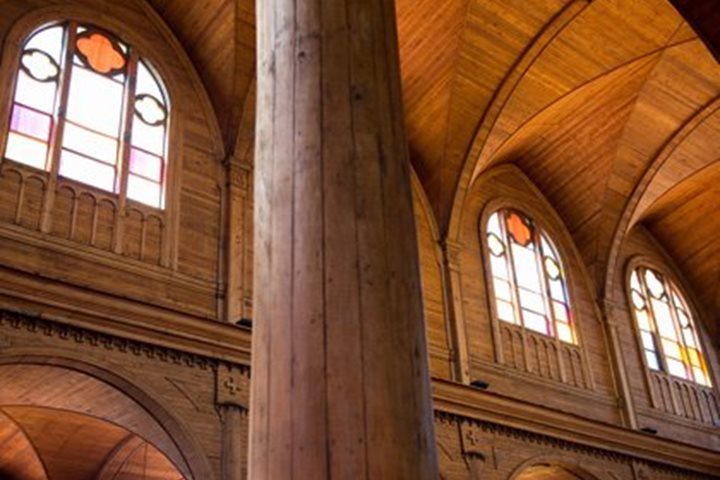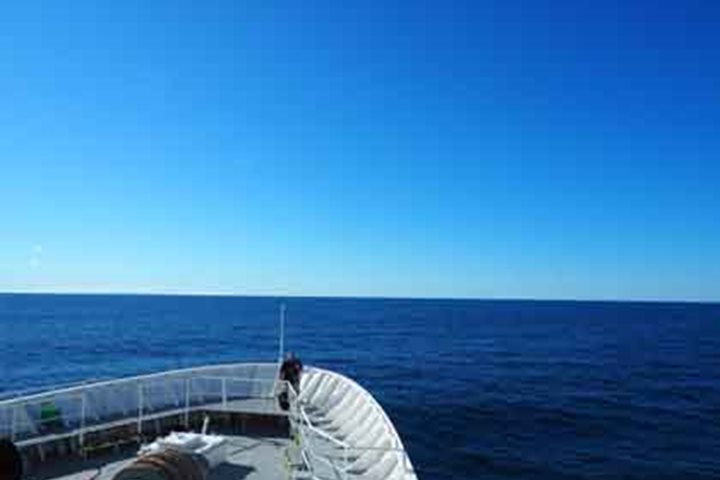An early morning approach to Selkirk Island by National Geographic Explorer offered us a wonderful lighted view of a colorful fishing village at the foot of a rugged mountain. A rather breezy and choppy sea did not allow disembarkation. We could have learned about the lives of men and families that spend the spring and summer in isolation, mainly fishing for the elusive spiny lobster, the endemic Jasus frontalis. This lobster lives in a chain of island and mounts extending for hundreds of miles between Juan Fernandez Archipelago to the northern Desventuradas Islands, San Felix, and San Ambrosio. Very recently the fishermen backed a proposal that was approved are under Chilean legislation as a Marine Protected Coastal Area and an extended Marine Park.
Despite the cold morning breeze off the Selkirk fishermen’s camp, we admired this massive piece of basalt where grassland and forest groves robbed a little space to the cliffs and pinnacles. It seemed as though a gigantic sword had furiously cut into it only to allow slim waterfalls and canyons to break through. This is the youngest daughter of Mother Earth, born from the same hotspot that gave birth earlier to Santa Clara “la vieja,” 4 million years ago, and it is scarcely younger Robinson Crusoe island, as Jim Kelley explained while we circumnavigated it.
Great number of birds saluted Explorer along the coastline and when leaving the island. Among them the blackbrow albatross, Stejneger’s petrel, pink-footed shearwater, pintado, and others. A few individuals of fur seals escorted or waited for the ship about 30 miles offshore.
In the evening, we heard Jim’s account of the Battle of Coronel, during the 1st World War, in which the German ship Dresden fought and was sunk in Cumberland Bay. We heard Doug during Recap on invasive introduced species of plants and animals, and their impact on endemic biota.
Dennis once again offered a lively description of the peculiarities of the flora of Juan Fernandez where 60% of species found here are endemic putting it in a most outstanding place in the world. We also heard a short story of Juan Fernandez Archipelago from Pia Pablo. She made it clear that the British sailor Alexander Selkirk did not live in Selkirk Island but in Robinson Crusoe Island between 1704 to 1709 after having been abandoned there with a gun, a rope, a knife, a bible, and other essentials. His story back in England inspired Daniel Defoe’s novel Robinson Crusoe.






